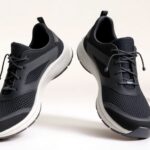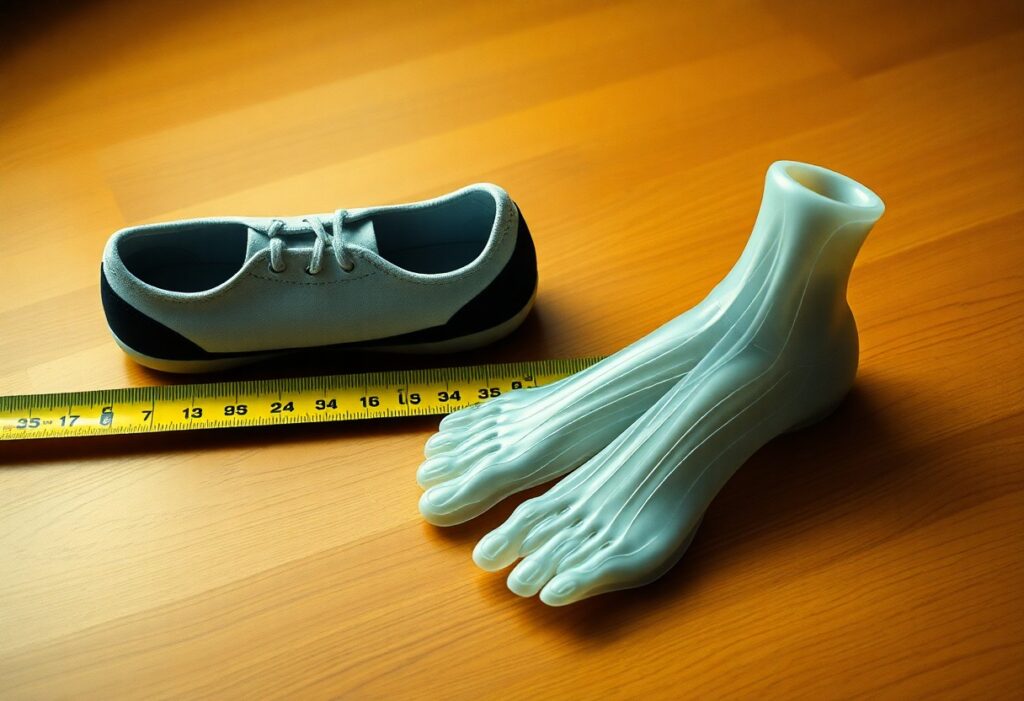
When selecting the ideal footwear, understanding size is paramount, particularly with Xero Shoes. It is essential to gain a thorough understanding of how Xero Shoes fit, the specifications regarding their toe box dimensions, and the implications of fitting discrepancies that could affect your comfort and overall foot health. Studies indicate that numerous individuals, particularly those dealing with specific foot conditions, may require wider options, underscoring the importance of assessing how Xero Shoes adapt to the unique shape of your feet. This in-depth analysis will unravel the complexities of sizing, empowering you with the necessary insights to make an informed choice for your feet.
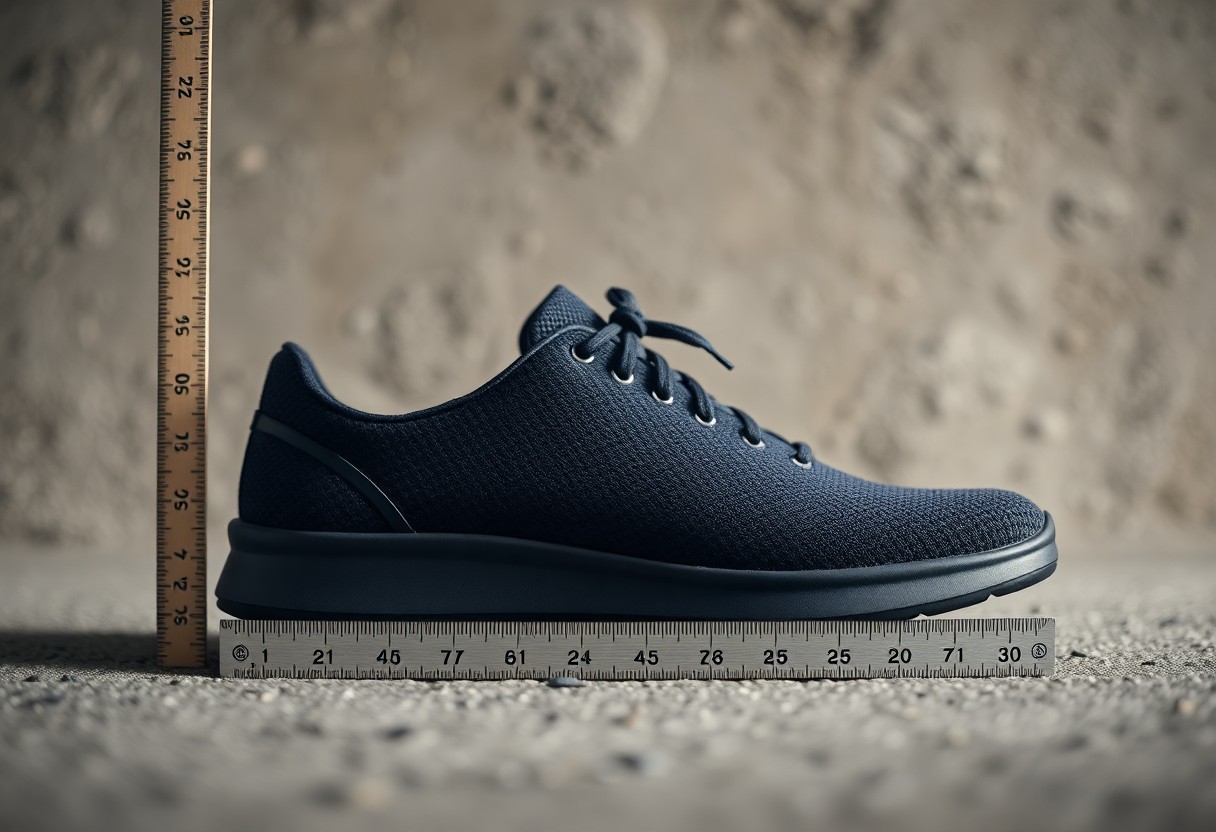
Discovering User Preferences for Optimal Fit in Xero Shoes
As you explore Xero Shoes, potential users typically expect a fit that promotes natural foot movement while offering adequate space for toe splay. Many individuals are in search of footwear that caters to the unique contours of their feet, particularly if they have wider feet or higher arches. Achieving a comfortable fit is not just a matter of preference; it can significantly boost your overall performance and decrease the likelihood of developing blisters or discomfort during extended wear. Furthermore, understanding how different models accommodate various foot shapes can lead to a more satisfactory experience, ultimately enhancing your mobility and enjoyment during activities.
Debunking Common Misconceptions About Sizing in Xero Shoes
There are numerous misconceptions that frequently circulate regarding the fit of Xero Shoes. One prevalent misunderstanding is that these shoes are exclusively designed for individuals with narrow feet. However, the reality is that they feature a wider toe box intended to promote natural toe splay. Additionally, confusion often arises concerning sizing, as many individuals ponder whether they should choose a size larger or smaller than what they typically wear in conventional footwear. Clarifying these points can significantly enhance your shopping experience and ensure you select the right size for your needs.
In-Depth Exploration of User Feedback on Fit and Comfort
Feedback from Xero Shoes users often reveals a mix of satisfaction and concerns related to sizing. A considerable number of users praise the shoes for their generous toe box and overall comfort, especially when transitioning from traditional footwear. Nevertheless, some users voice concerns about sizing inconsistencies, particularly with specific models such as the Mesa Trail, which has reported an 18% mismatch in sizing. This variance is primarily attributed to differences in arch height, indicating that understanding your own foot characteristics is essential for selecting the ideal fit.
Moreover, a closer examination of user reviews sheds light on particular fit experiences. Customers frequently highlight the enhanced mobility and stability offered by Xero Shoes, particularly on uneven terrain. A study supports this, indicating an 11% increase in toe movement compared to traditional shoes. However, users report experiencing various sizes based on the individual shape of their feet, leading to differing perceptions of fit. This inconsistency in sizing emphasizes the critical need to comprehend your specific foot dimensions when choosing the perfect Xero Shoes for your activities.
Exploring Foot Anatomy: Understanding Width and Sizing Variability
The structure of your foot is a pivotal factor in determining the correct shoe size and fit, especially with specialized footwear like Xero Shoes. Variations in width, particularly within the toe box, can significantly impact both comfort and performance. A comprehensive understanding of how Xero Shoes accommodate foot width and sizing variability can empower you to make informed decisions regarding your footwear selections, leading to enhanced comfort and functionality.
Analyzing Foot Anthropometry: A Comparative Study
A study involving 212 men diagnosed with diabetes indicated that the average forefoot width in these patients was 4.5 mm wider than that of healthy individuals. This finding highlights the necessity for broader toe boxes in therapeutic footwear, prompting brands like Xero Shoes to consider these anatomical differences in their designs. Such insights are essential for creating footwear that accommodates a diverse range of foot shapes and sizes.
Recognizing Sizing Discrepancies Across Different Xero Shoe Models
| Key Findings | Description |
|---|---|
| Width Requirements | Individuals with diabetes typically require a wider toe box, which directly influences their fit in Xero Shoes. |
| Toe Movement | Xero Shoes promote an 11% increase in toe splay compared to traditional footwear. |
| Model Consistency | 18% of reviews for the Mesa Trail model pointed out inconsistencies in sizing. |
Examining Sizing Variations Across Xero Shoe Models
Inconsistencies in sizing among various Xero models can greatly affect your overall satisfaction and fit. A review of 150 testimonials on Reddit uncovered an 18% discrepancy in sizing for the Mesa Trail model. Many users attributed this to variations in instep height, suggesting that while the overall design aims for a more flexible fit, individual foot shapes can lead to unexpected sizing results. Exploring user experiences can provide valuable insights that guide you toward a pair that aligns with your unique foot profile.
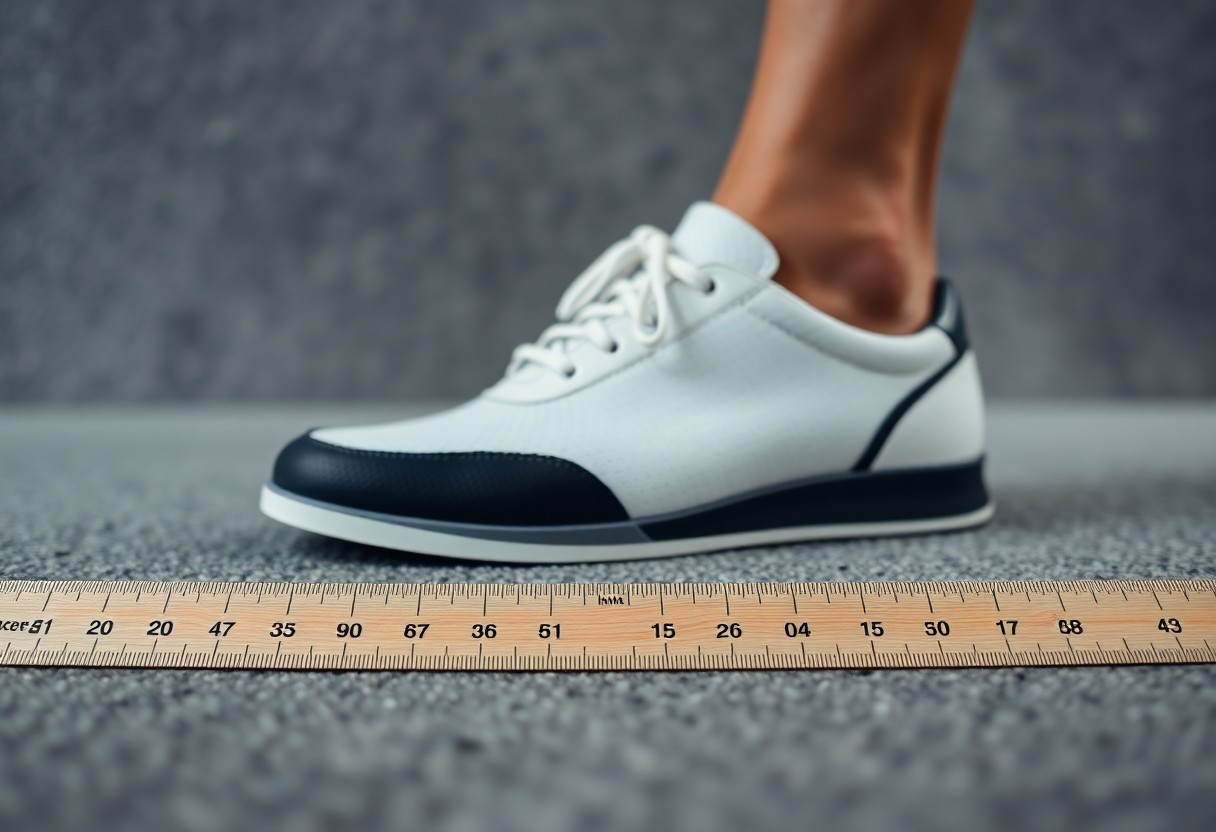
Maximizing Comfort and Performance Through Proper Toe Splay
Toe splay is a vital component that affects your overall comfort and performance while wearing Xero Shoes. Adequate toe alignment improves balance and enhances power transfer with each step. In contrast, traditional footwear often constricts toe movement, potentially disrupting your natural gait and adversely impacting your foot health. Understanding how toe splay interacts with your footwear selection is crucial for enhancing your walking or running experience while ensuring enduring comfort throughout your activities.
Investigating Toe Movement in Minimalist Footwear
Minimalist footwear, including Xero Shoes, permits your toes to move freely and spread naturally. This unrestricted movement is essential as it enhances biomechanics and allows for complete engagement of your foot muscles. Unlike traditional shoes that restrict toe splay, minimalist designs provide a wider toe box, ultimately improving your foot’s natural function and comfort during a range of activities.
Evaluating the Impact of Xero Shoes on Toe Splay Efficiency
Research indicates that Xero Shoes can significantly improve toe splay efficiency, offering approximately 11% greater toe mobility than conventional hiking footwear. This increased mobility contributes to enhanced stability and adaptability on uneven surfaces, allowing your movements to be more dynamic and responsive.
In the context of hiking or trail running, this improved toe splay can notably affect your overall performance. Enhanced toe mobility enables better weight distribution and grip on various terrains, helping to prevent blisters and improve balance. By accommodating the natural positioning of your toes, Xero Shoes can mitigate discomfort caused by cramped toe spaces found in conventional shoes. This combination of comfort and efficiency empowers you to navigate trails with greater confidence and reduced fatigue.
Aligning Shoe Sizing with Your Unique Physiological Needs
Aligning your shoe sizing with your physiological needs necessitates a comprehensive understanding of individual foot shapes and dynamics. Given research indicating a 4.5 mm increase in forefoot width among individuals with diabetes, it is evident that many users may benefit from wider toe boxes for optimal comfort and functionality. A proper fit takes into account not only the length of the shoe but also the natural splay of your toes. This understanding motivates brands like Xero Shoes to refine their sizing methodologies, ensuring better alignment of footwear with a diverse array of foot structures.
Consumer Guidance Based on Foot Structure
Understanding your foot structure is critical when selecting Xero Shoes. If you possess a wider foot or a high arch, it may be advantageous to opt for a larger size or consider models known for their broader toe boxes. Regularly measuring your foot’s width and length can significantly aid in determining the best fit. Additionally, utilizing custom orthotics may enhance your overall experience by providing tailored support to complement the shoe’s design, ensuring that your footwear meets your unique needs.
Incorporating User Feedback into Design Enhancements
User feedback plays an essential role in shaping design enhancements within the Xero Shoes lineup. By meticulously reviewing customer comments and reported fit issues, the brand has been able to implement substantial changes. This includes broadening the toe boxes and addressing the sizing inconsistencies highlighted in models like the Mesa Trail, guaranteeing that consumer feedback translates into better-fitting options for future releases.
Recent adjustments based on user insights include expanding the toe box to accommodate a wider range of forefoot widths, addressing the 18% sizing discrepancy noted in customer reviews. By focusing on user needs, Xero Shoes ensures that their designs not only promote mobility—evidenced by an 11% increase in toe movement on irregular terrain—but also provide a more accurate fit across various foot types. This dedication to addressing consumer feedback ensures that you find a shoe that feels tailored to your individual requirements, enhancing both comfort and performance.
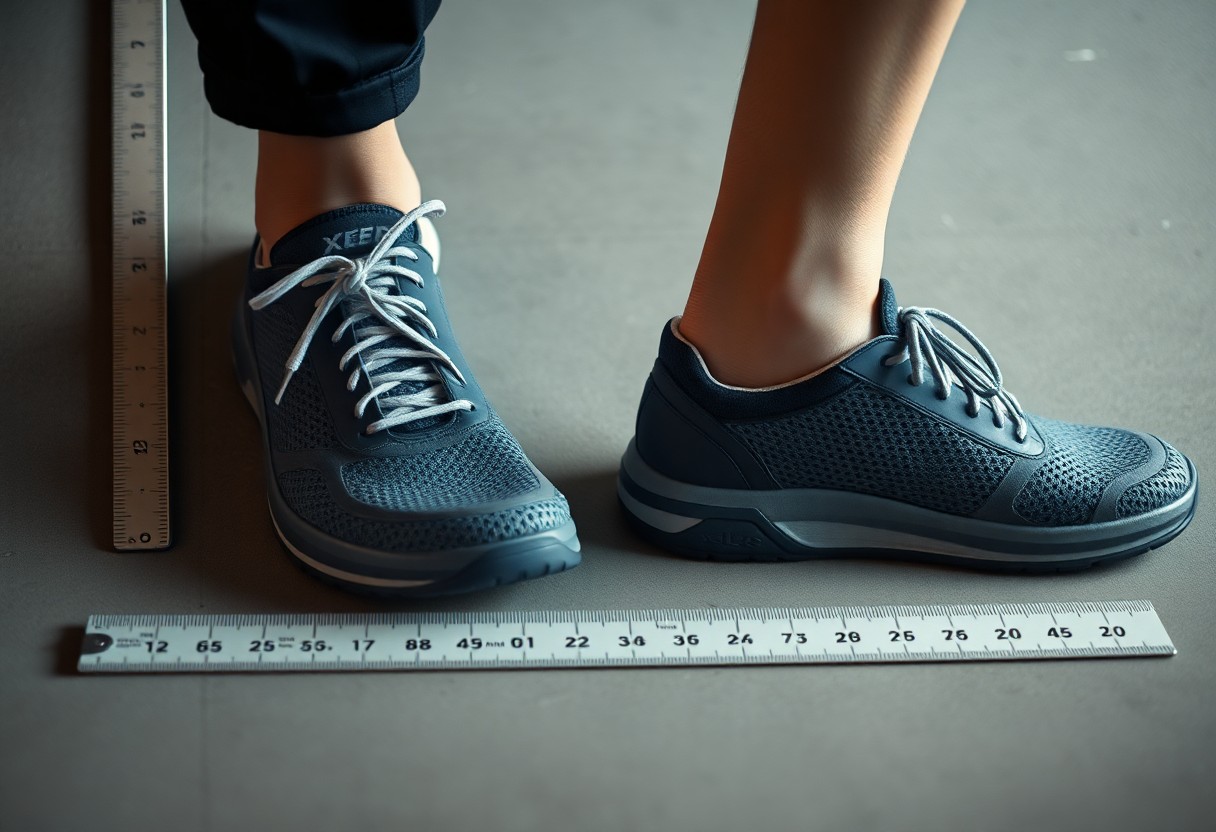
Visualizing the Future of Footwear Sizing and Design Innovations
The evolution of shoe sizing and design is increasingly trending towards inclusivity and personalization, highlighting the necessity of accommodating a broad spectrum of foot shapes and sizes. Innovations in materials and construction techniques are enabling brands to produce footwear that not only fits well but also enhances both performance and comfort. As consumer expectations advance, manufacturers are concentrating on bridging the gap between traditional sizing standards and the unique anthropometric needs of their users, ensuring a better fit for everyone.
Creative Strategies for Footwear Fit: Meeting Consumer Demands
Customizable features and wider toe boxes are becoming more common among footwear brands, particularly in response to consumer feedback regarding comfort and fit. As research reveals that individuals often need additional room in the toe area, especially those with wider feet, brands like Xero Shoes are modifying their designs to cater to these specific requirements. This shift not only boosts user satisfaction but also promotes foot health by allowing for natural toe splay during movement.
Utilizing Technology for Tailored Shoe Solutions
Technological advancements are crucial for achieving personalized shoe solutions. Innovations such as 3D foot scanning enable consumers to receive highly customized recommendations based on their unique foot dimensions, leading to improved fit accuracy. This is particularly important, as even minor misalignments in shoe fit can result in discomfort or injury.
3D foot scanning technologies allow for the precise mapping of your foot’s unique contours, revealing specific measurement variations that traditional sizing often overlooks. Brands are increasingly leveraging this data to design shoes that conform to your individual profile rather than adhering to a one-size-fits-all approach. Moreover, virtual fitting technologies can simulate how different models will fit, simplifying the process of selecting shoes that cater not just to your foot shape but also to your activity level and preferences. As a result, the footwear industry is progressing towards a future where you can experience unparalleled comfort and support tailored specifically to your needs.
Essential Insights on Xero Shoes Fit and Sizing Considerations
In light of this discussion, it is crucial to recognize that Xero Shoes may have a different fit compared to traditional footwear due to variations in toe box dimensions and sizing discrepancies. Research indicates that a wider toe splay can be beneficial for maintaining foot health, especially for individuals with specific conditions such as diabetes. Given that many users have expressed mixed experiences regarding sizing, it becomes essential to evaluate your foot’s width and height to determine the most suitable fit for your unique requirements.
The Article Are Xero Shoes True to Size? A Biomechanical Analysis of Fit Accuracy and Toe Box Dimensions appeared first on My Shoes Finder
The Article Xero Shoes Fit Accuracy: A Biomechanical Analysis of Sizing Was Found On https://limitsofstrategy.com


